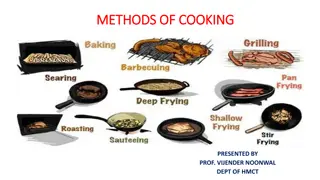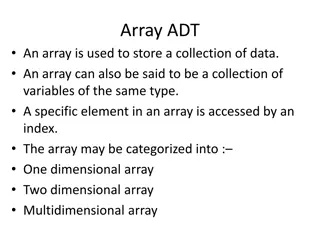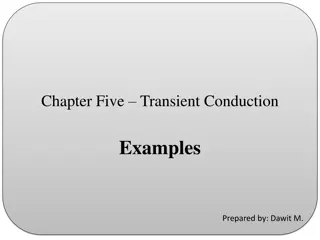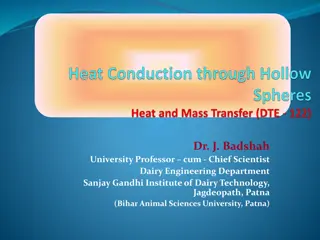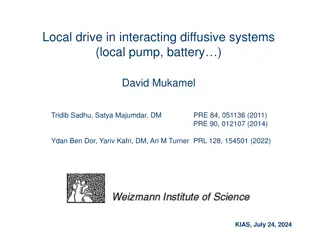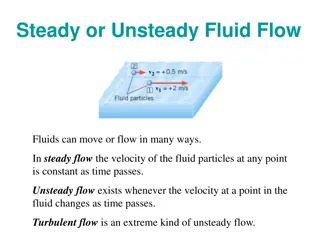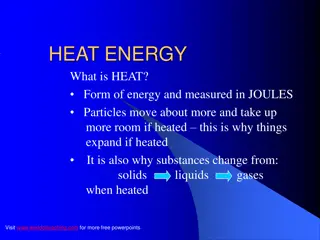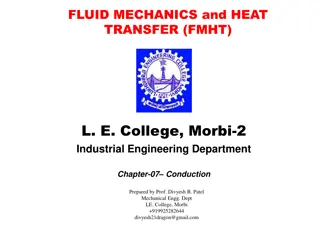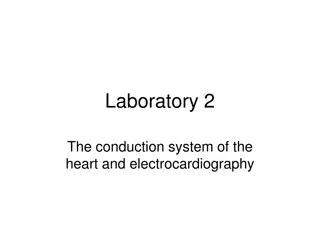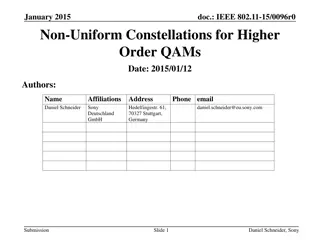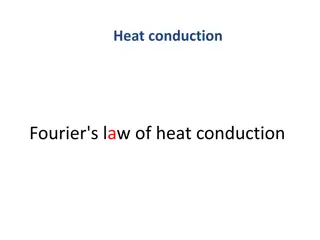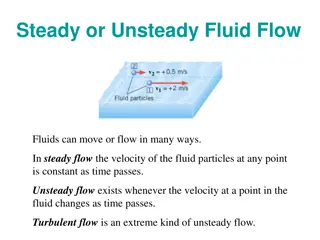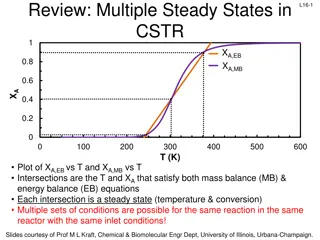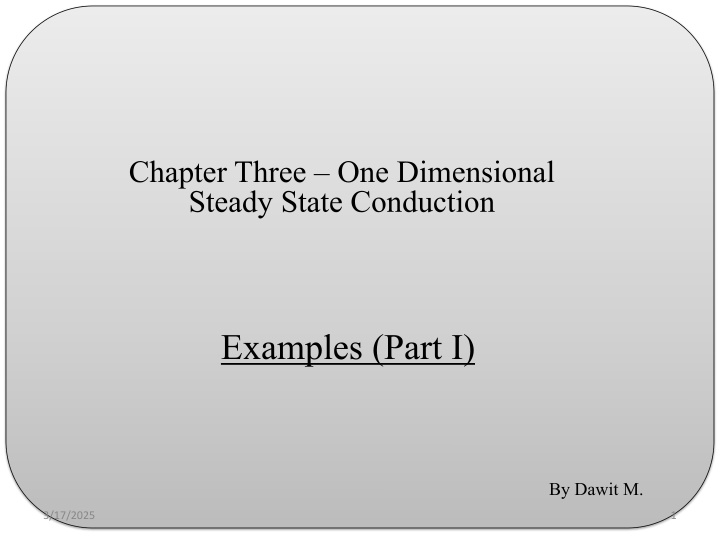
One-Dimensional Steady State Conduction Examples - Part I
In this resource by Dawit M., you will find examples related to one-dimensional steady state conduction, focusing on scenarios like plane wall heat loss with convection and radiation, composite wall heat loss, and more. The examples involve calculating thermal resistances, heat loss rates, and determining necessary insulation thickness. Detailed solutions and calculations are provided for better understanding.
Download Presentation

Please find below an Image/Link to download the presentation.
The content on the website is provided AS IS for your information and personal use only. It may not be sold, licensed, or shared on other websites without obtaining consent from the author. If you encounter any issues during the download, it is possible that the publisher has removed the file from their server.
You are allowed to download the files provided on this website for personal or commercial use, subject to the condition that they are used lawfully. All files are the property of their respective owners.
The content on the website is provided AS IS for your information and personal use only. It may not be sold, licensed, or shared on other websites without obtaining consent from the author.
E N D
Presentation Transcript
Chapter Three One Dimensional Steady State Conduction Examples (Part I) By Dawit M. 3/17/2025 1
Outline Revision Examples Example 1: Plane Wall Heat Loss ( with Convection + Radiation) Exercise 2: Plane Wall Heat Loss ( with Convection) Example 3: Composite Plane Wall Heat Loss 3/17/2025 2
Example 1: Plane Wall Heat Loss (with Conv.) 1. A house has a composite wall of wood, fiberglass insulation, and plaster board, as indicated in the sketch. On a cold winter day, the convection heat transfer coefficients are ho= 60 W/m2K and hi= 30 W/m2K. The total wall surface area is 350 m2. kb= 0.038 W/m K ks= 0.12 W/m K kp=0.17 W/m K. (Table A-3, Incropera) Determine a symbolic expression for the total thermal resistance of the wall, including inside and outside convection effects for the prescribed conditions. Determine the total heat loss through the wall. a) b) 3/17/2025 4
Example 2: Plane Wall Heat Loss (with Conv. + Rad.) 2. To reduce the heat loss rate, a person wears special sporting clothes (insulation, k=0.014 W/m.K) against an environment of air or water at 10oC. The emissivity of the cloth is 0.95. What thickness of insulation is needed to reduce the heat loss rate to 100 W ( a typical metabolic heat generation rate) in air and water? What are the resulting skin temperatures? Take: surface area as 1.8 m2 , hr = 5.09 W/m2K. 3/17/2025 5
Exercise 3. A 3-m-high and 5-m-wide wall consists of long 16-cm x 22-cm cross section horizontal bricks (k = 0.72 W/m C) separated by 3-cm-thick plaster layers (k = 0.22 W/m C). There are also 2-cm-thick plaster layers on each side of the brick and a 3-cm-thick rigid foam (k =0.026 W/m C) on the inner side of the wall, as shown in Fig. 2. The indoor and the outdoor temperatures are 20 C and -10 C, and the convection heat transfer coefficients on the inner and the outer sides are h1 = 10 W/m2 C and h2 = 25 W/m2 C, respectively. Assuming one-dimensional heat transfer and disregarding radiation, determine the rate of heat transfer through the wall. 3/17/2025 6
Thank You! Any Questions? 3/17/2025 7



